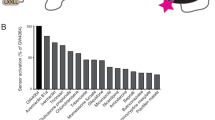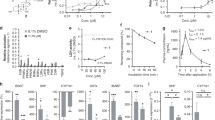Abstract
The farnesoid X receptor (FXR, NR1H4) has been recognized as an attractive therapeutic target because it is a nuclear hormone receptor that controls the expression level of cholesterol-7α-hydroxylase, which in turn regulates bile acid production and cholesterol excretion. To compare receptor activity between each domain and the full-length protein, human FXR cDNA was cloned from a human liver cDNA library. Three human FXR cDNA, designated FXR20, FXR33, and FXR53 cDNA, were subcloned and ligated into a pET28a expression vector. Each protein was expressed in Escherichia coli (BL21) and purified by nickel-nitrilotriacetic acid column chromatography. Approximately 5 mg of FXR33 (1–182 amino acids deleted from FXR, 37 kDa) and 2 mg of FXR53 (the full-length protein of FXR, 59 kDa) was purified from 1 L of Luria-Bertani culture, achieving at least 90% purity. The coactivator recruitment assay for FXR activation was carried out with the three variants of the FXR protein by using dissociation-enhanced lanthanide fluoroimmunoassay-europium-N1-labeled anti-His antibody. From an optimized assay, a saturated hyperbolic fluorescence signal curve was produced when 250 nM of FXR33 and 100 nM of steroid receptor coactivator-1 peptide, a coactivator of FXR consisting of 26 amino acids, were used with a concentration dependence on chenodeoxycholic acid (from 0 to 200 μM). The ligand-binding domain of FXR (FXR33) was the most suitable protein for studying the activation of FXR with a fluorescence-based assay, because it showed better structural stability than either the full length of FXR (FXR53) or the DNA-binding domain of FXR (FXR20).
Similar content being viewed by others
Abbreviations
- apo:
-
apolipoprotein
- bp(s):
-
base pair(s)
- CDCA:
-
chenodeoxycholic acid
- CYP7A1:
-
cholesterol-7α-hydroxylase
- DELFIA:
-
dissociation-enhanced lanthanide fluoroimmunoassay
- 6-ECDCA:
-
6α-ethyl-chenodeoxycholic acid
- FXR:
-
farnesoid X receptor
- 1-BABP:
-
ileal-bile acid-binding protein
- Ni-NTA:
-
nickel-nitrilotriacetic acid
- PLTP:
-
phospholipid transfer protein
- SHP:
-
small heterodimer partner
- SRC-1:
-
steroid receptor coactivator-1
- TBST:
-
Tris-HCL+NaCl+EDTA+Tween
References
Edwards, P.A., Kast, H.R., and Anisfeld, A.M. (2002) BAREing It All: The Adoption of LXR and FXR and Their Roles in Lipid Homeostasis, J. Lipid Res. 43, 2–12.
Fayard, E., Schoonjans, K., and Auwerx, J. (2001) Xol INXS: Role of the Liver X and the Farnesol X Receptors, Curr. Opin. Lipidol. 12, 113–120.
Forman, B.M., Goode, E., Chen, J., Oro, A.E., Bradley, D.J., Perlmann, T., Noonan, D.J., Burka, L.T., McMorris, T., Lamph, W.W., et al. (1995) Identification of a Nuclear Receptor That Is Activated by Farnesol Metabolites, Cell 8, 687–693.
Davis, R.A., Miyake, J.H., Hui, T.Y., and Spann, N.J. (2002) Regulation of Cholesterol-7α-Hydroxylase: Barely Missing a SHP, J. Lipid Res. 43, 533–543.
Chawla, A., Repa, J.J., Evans, R.M., and Mangelsdorf, D.J. (2001) Nuclear Receptors and Lipid Physiology: Opening the X-Files, Science 294, 1866–1870.
Goodwin, B., Jones, S.A., Price, R.R., Watson, M.A., McKee, D.D., Moore, L.B., Galardi, C., Wilson, J.G., Lewis, M.C., Roth, M.E., et al. (2000) A Regulatory Cascade of the Nuclear Receptors FXR, SHP-1, and LRH-1 Represses Bile Acid Biosynthesis, Mol. Cell 6, 517–526.
Laffitte, B.A., Kast, H.R., Nguyen, C.M., Zavacki, A.M., Moore, D.D., and Edwards, P.A. (2000) Identification of the DNA Binding Specificity and Potential Target Genes for the Farnesoid X-Activated Receptor, J. Biol. Chem. 275, 10638–10647.
Mak, P.A., Kast-Woelbern, H.R., Anisfeld, A.M., and Edwards, P.A. (2002) Identification of PLTP as an LXR Target Gene and ApoE as an FXR Target Gene Reveals Overlapping Targets for the Two Nuclear Receptors, J. Lipid Res. 43, 2037–2041.
Parks, D.J., Blanchard, S.G., Bledsoe, R.K., Chandra, G., Consler, T.G., Kliewer, S.A., Stimmel, J.B., Willson, T.M., Zavacki, A.M., Moore, D.D., and Lehmann, J.M. (1999) Bile Acids: Natural Ligands for an Orphan Nuclear Receptor, Science 284, 1365–1368.
Pellicciari, R., Fiorucci, S., Camaioni, E., Clerici, C., Costantino, G., Maloney, P.R., Morelli, A., Parks, D.J., and Willson, T.M. (2002) 6α-Ethyl-chenodeoxycholic acid (6-ECDCA), a Potent and Selective FXR Agonist Endowed with Anticholestatic Activity, J. Med. Chem. 45, 3569–3572.
Maloney, P.R., Parks, D.J., Haffner, C.D., Fivush, A.M., Chandra, G., Plunket, K.D., Creech, K.L., Moore, L.B., Wilson, J.G., Lewis, M.C., et al. (2000) Identification of a Chemical Tool for the Orphan Nuclear Receptor FXR, J. Med. Chem. 43, 2971–2974.
Dussault, I., Beard, R., Lin, M., Hollister, K., Chen, J., Xiao, J., Chandraratna, R., and Forman, B.M. (2003) Identification of Gene-Selective Modulators of the Bile Acid Receptor FXR, J. Biol. Chem. 278, 7027–7033.
Zhang, Y., Kast-Woelbern, H.R., and Edwards, P.A. (2003) Natural Structural Variants of the Nuclear Receptor FarnesoidxReceptor Affect Transcriptional Activation, J. Biol. Chem. 278, 104–110.
Cho, K.H., and Jonas, A. (2000) A Key Point Mutation (V156E) Affects the Structure and Functions of Human Apolipoprotein A-I, J. Biol. Chem. 275, 26821–26827.
Onate, S.A., Tsai, S.Y., Tsai, M., and O'Malley, B.W. (1995) Sequence and Characterization of a Coactivator for the Steroid Hormone Receptor Superfamily, Science 270, 1354–1357.
Makishima, M., Okamoto, A.Y., Repa, J.J., Tu, H., Learned, R.M., Luk, A., Hull, M.V., Lustig, K.D., Mangelsdorf, D.J., and Shan, B. (1999) Identification of a Nuclear Receptor for Bile Acids, Science 284, 1362–1365.
Glickman, J.F., Wu, X., Mercuri, R., Illy, C., Bowen, B.R., He, Y., and Sills, M. (2002) A Comparison of ALPHAScreen, TRFRET, and TRF as Assay Methods for FXR Nuclear Receptors, J. Biomol. Screen. 7, 3–10.
Matsudaira, P. (1987) Sequence from Picomole Quantities of Proteins Electroblotted onto Polyvinylidene Difluoride Membranes, J. Biol. Chem. 262, 10035–10038.
Markwell, M.A.K., Haas, S.M., Bieber, L.L., and Tolbert, N.E. (1978) A Modification of the Lowry Procedure to Simplify Protein Determination in Membrane and Lipoprotein Samples, Anal. Biochem. 87, 206–210.
Chiang, J.Y.L. (1998) Regulation of Bile Acid Synthesis, Front. Biosci. 3, D176-D193.
Kanda, T., Foucand, L., Nakamura, Y., Niot, I., Besnard, P., Fujita, M., Sakai, Y., Hatakeyama, K., Ono, T., and Fujii, H. (1998) Regulation of Expression of Human Intestinal Bile Acid-Binding Protein in Caco-2 Cells, Biochem. J. 330, 261–265.
Ananthanarayanan, M., Balasubramanian, N., Makishima, M., Mangelsdorf, D.J., and Suchy, F.J. (2001) Human Bile Salt Export Pump Promoter Is Transactivated by the Farnesoid X Receptor/Bile Acid Receptor, J. Biol. Chem. 276, 28857–28865.
Urizar, N.L., Dowhan, D.H., and Moore, D.D. (2000) The Farnesoid X-Activated Receptor Mediates Bile Acid Activation of Phospholipid Transfer Protein Gene Expression, J. Biol. Chem. 275, 39313–39317.
Kim, M.S., Shigenaga, J., Moser, A., Feingold, K., and Grunfeld, C. (2003) Repression of Farnesoid X Receptor During the Acute Phase Response, J. Biol. Chem. 278, 8988–8995.
Otte, K., Kranz, H., Kober, I., Thompson, P., Hoefer, M., Haubold, B., Remmel, B., Voss, H., Kaiser, C., Albers, M., et al. (2003) Identification of Farnesoid X Receptor β as a Novel Mammalian Nuclear Receptor Sensing Lanosterol, Mol. Cell. Biol. 23, 864–872.
Seol, W., Choi, H.S., and Moore, D.D. (1995) Isolation of Proteins That Interact Specifically with the Retinoid X Receptor: Two Novel Orphan Receptors, Mol. Endocrinol. 9, 72–85.
Urizar, N.L., Liverman, A.B., Dodds, D.T., Silva, F.V., Ordentlich, P., Yan, Y., Gonzalez, F.J., Heyman, R.A., Mangelsdorf, D.J., and Moore, D.D. (2002) A Natural Product That Lowers Cholesterol as an Antagonist Ligand for FXR, Science 296, 1703–1706.
Wu, J., Xia, C., Meier, J., Li, S., Hu, X., and Lala, D.S. (2002) The Hypolipidemic Natural Product Guggulsterone Acts as an Antagonist of the Bile Acid Receptor, Mol. Endocrinol. 16, 1590–1597.
Cui, J., Huang, L., Zhao, A., Lew, J.L., Yu, J., Sahoo, S., Meinke, P.T., Royo, I., Peleaz, F., and Wright, S.D. (2003) Guggulsterone Is a Farnesoid X Receptor Antagonist in Coactivator Association Assays but Acts to Enhance Transcription of Bile Salt Export Pump, J. Biol. Chem. 278, 10214–10220.
Gopal, K., Saran, N.K., Nityanand, S., Gupta, P.P., Hasan, M., Das, S.K., Sinha, N., and Agarwal, S.S. (1986) Clinical Trial of Ethyl Acetate Extract of Gum Gugulu (Gugulipid) in Primary Hyperlipidemia, J. Assoc. Physicians India 34, 249–251.
Nityanand, S., Srivastava, I.S., and Asthana, O.P. (1989) Clinical Trials with Gugulipid. A New Hypolipidaemic Agent, J. Assoc. Physicians India 37, 323–328.
Author information
Authors and Affiliations
Corresponding author
About this article
Cite this article
Cho, KH., Park, JY., Han, JI. et al. Ligand-binding domain of farnesoid X receptor (FXR) had the highest sensitivity and activity among FXR variants in a fluorescence-based assay. Lipids 38, 1149–1156 (2003). https://doi.org/10.1007/s11745-003-1173-y
Received:
Revised:
Accepted:
Issue Date:
DOI: https://doi.org/10.1007/s11745-003-1173-y




